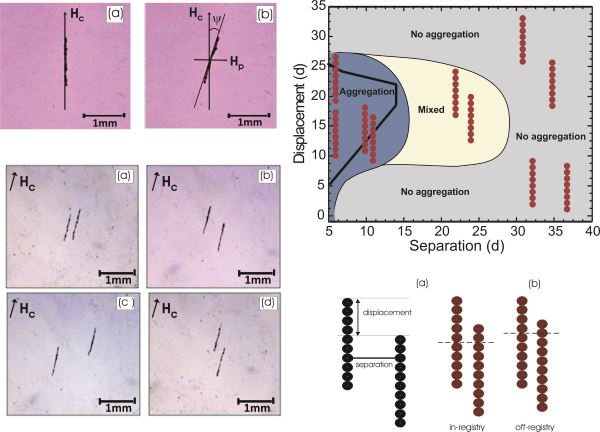
Participants: Rosario Moctezuma, José Luis Arauz
Magnetorheological (MR) fluids are smart fluids that can undergo a transition from liquid-like to solid-like behavior when a magnetic field is applied. From these systems we study different aspects such as lateral aggregation induced by time-dependent magnetic fields, multifractality of the structures formed, parameters that optimize the response, and glass former models.

1. Movement of a single chain under an oscillating field
2. Pairs of chains at different initial configurations: (a) short separation and short displacement, (b) medium separation and medium displacement, (c) large separation and large displacement, and (d) short separation and large displacement.
3. Phase diagram for lateral aggregation of pairs of chains.
4. Structures formed in a MR fluid in the presence of a static (92 G) magnetic field (first column) and in the presence of static (80 G) and oscillating (12 G) magnetic field (second column) at different area fractions.

Fractal dimension for different concentrations. When only the static magnetic field is applied, the chains are distributed homogeneously along the whole sample whereas when both fields are applied, the configuration changes drastically, and the particle distribution becomes inhomogenous.

We are also interested in the study of the structural and dynamical properties of systems composed of: (a) magnetic particles , where the static magnetic field is oriented in the z-direction and (b) steel beads, subjected by an alternating magnetic field.